Top News

Cerner posts Q1 results: revenue up 6.1 percent, EPS $0.62 vs. $0.51, beating adjusted earnings estimates but falling short on revenue. A 12 percent decline in system sales was balanced by a 16 percent increase in support, maintenance, and service revenues. From the conference call, the company announced one win over Epic in the quarter, talked up its international business, and touted its population health management efforts. Neal Patterson participated, finishing up with, “You can see from the CommonWell Alliance that we use our leadership position in the industry for the greater good, but also to basically highlight where basically we have bad actors around subjects such as interoperability.”
Reader Comments
From Med Student: “Re: Meaningful Use Stage 3. If you could change anything in Stage 3, what would you include or cut out?” I’m curious about that myself, so please leave a comment with your thoughts.
From Herky: “Re: warm-blooded. Spotted at TEDMED last week, riding the bus together from the Kennedy Center to GWU for Great Challenges Day: Allscripts CEO Paul Black and former CEO Glen Tullman. I guess all those rumors about bad blood between the two were ill founded.”
HIStalk Announcements and Requests
 Some hot news you may have missed this week on HIStalk Practice: compensation for medical directors is increasingly tied to quality metrics, as are job responsibilities. Advice for physicians engaging in Web-based messaging services. Details on athenahealth’s emergency response process, which was activated during last week’s manhunt for the Boston Marathon bombing suspects. EMR adoption by primary care physicians in Canada has doubled from 23 percent in 2006 to 56 percent in 2012. Rather than sell out to hospitals, practice management consultants offer alternate alignment models for consideration. Dr. Gregg puts his spin on the phrase that pays and playing in the healthcare sandbox. Take or moment or three to catch up on the latest ambulatory HIT news and sign up for e-mail updates while you are there. Thanks for reading.
Some hot news you may have missed this week on HIStalk Practice: compensation for medical directors is increasingly tied to quality metrics, as are job responsibilities. Advice for physicians engaging in Web-based messaging services. Details on athenahealth’s emergency response process, which was activated during last week’s manhunt for the Boston Marathon bombing suspects. EMR adoption by primary care physicians in Canada has doubled from 23 percent in 2006 to 56 percent in 2012. Rather than sell out to hospitals, practice management consultants offer alternate alignment models for consideration. Dr. Gregg puts his spin on the phrase that pays and playing in the healthcare sandbox. Take or moment or three to catch up on the latest ambulatory HIT news and sign up for e-mail updates while you are there. Thanks for reading.
Acquisitions, Funding, Business, and Stock

Hill-Rom Holdings reports Q2 results: revenue up three percent, EPS $0.37 vs. $0.43.

Streamline Health’s Q4 numbers: revenue up 49 percent, EPS –$0.63 vs. $0.00.

Lexmark subsidiary Perceptive grew Q1 revenue 47 percent to $44 million.

Informatica reports Q1 results: revenue up 9 percent, EPS $0.16 vs. $0.24.

Qlik Technologies announces Q1 results: revenue up 22 percent, adjusted EPS –$0.09 vs. –$0.03, beating expectations on both.
Nuance seeks the advice of Goldman Sachs following the acquisition by activist investor Carl Ican of 9.3 percent of the company’s shares.
Sales
The Michigan Health Information Network partners with Surescripts to allow users of Surescripts’ Clinical Interoperability network to send electronic health information to the State of Michigan’s public health reporting system through the HIN and the Michigan Department of Community Health.
Presence Health (IL) awards Harris Corp. a three-year contract to create a private HIE.

The University of New Mexico Health Sciences Center purchases MDaudit Professional billing compliance software from Hayes Management Consulting.
Syracuse Community Health Center (NY) selects NextGen Healthcare’s Ambulatory EHR, PM, and Electronic Dental Record solutions for its 16-location FQHC.
MModal signs seven new hospitals and imaging centers for its Fluency for Imaging radiology workflow technology.

Fisher-Titus Medical Center (OH) selects Wolters Kluwer’s ProVation Order Sets.
UC Davis Medical Center (CA) selects TriZetto’s ClaimLogic as its claims processing solution, where it will integrate with Epic.
People
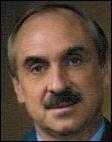
The Patient-Centered Outcomes Research Institute hires Bryan Luce (United BioSource Corporation) as chief science officer.
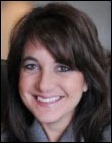
Interactive patient care system provider Skylight Healthcare Systems names Lisa Romano (TeleTracking Technologies) chief clinical officer.
Cleveland Clinic Innovations names its current GM of IT Commercialization Gary Fingerhut as the organization’s interim director, taking over for founding executive director Chris Coburn, who is heading to Partners HealthCare to lead innovation efforts.
Announcements and Implementations
Atlantic General Hospital (MD) implements Allscripts Sunrise.
Physicians’ Alliance of America launches iMedicor SocialHIE, giving its 34,000 physician members the ability to electronically exchange clinical information.
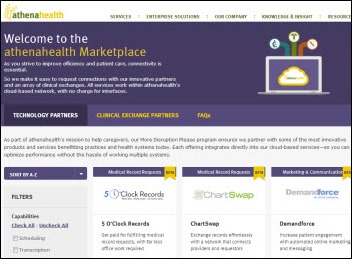
Athenahealth announces its marketplace for third-party solutions.

HCS, which offers the Interactant suite, launches a new logo and website.
UMass Memorial Health Care deploys MedAptus Technical Charge Capture.
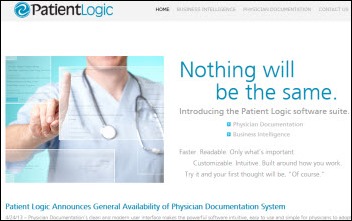
Patient Logic launches its physician documentation system at three small hospitals. Its sister HealthTech companies are HMS and Medhost.
Children’s Specialized Hospital (NJ) launches GetWellNetwork’s GetWell Town interactive patient system, funded by a grant from L‘Oreal USA.
The physician informaticist who heads up MedAppLab in Germany says diagnostic or prescriptive smartphone apps present too many possible sources of error to be recommended for use, including the quality of peripherals such as headphones.
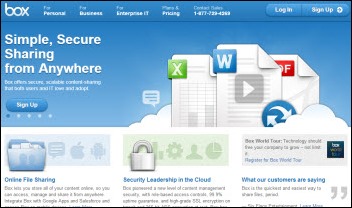
Online storage vendor Box says its product is now HIPAA compliant, also announcing 10 partner applications that include the drchrono EHR, in which Box has taken an undisclosed equity position.
Lott QA Group and HRS announce an ICD-10 testbed for coding and clinical documentation.
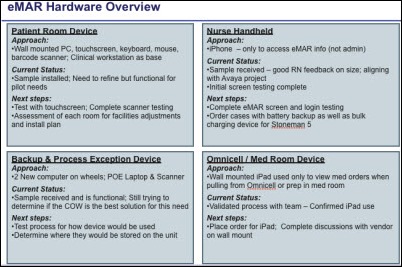
John Halamka says in his blog that Beth Israel Deaconess Medical Center will go live on its homegrown electronic medication administration record in June. He says it’s Web-based, mobile-friendly, and integrated into existing systems. It will support the use of iPhones for viewing, iPads to verify orders at the Omnicell cabinets, and wall-mounted computers with bar code readers for verification.
Government and Politics
CMS proposes raising the maximum reward for reporting Medicare fraud from $1,000 to $9.9 million; denying Medicare enrollment to providers affiliated with an entity that has unpaid Medicare debt; and denying or revoking billing privileges to individuals with felony convictions.
ONC revokes EHR certification on EHRMagic-Ambulatory and EHRMagic-Inpatient following notification that the products did not meet the required functionality and should not have passed certification. InfoGard Laboratories, which certified the products originally, retested them after reviewing additional information and gave them a failing score. Above is the reaction of Candid CIO Will Weider.
AHA tells CMS not to add additional HIE requirements for providers, but instead focus more on implementing current HIT initiatives.

Meanwhile, the founding members of the CommonWell Health Alliance tell CMS they are committed to collaboration with HIT suppliers, adding that they will use existing standards and supplement them only when needed. Members also emphasized the importance of creating an open forum for secure patient data exchange and removing data access barriers.
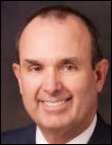
A North Carolina Senate panel approves a bill that would require hospitals to create easily understood bills that include definitions for any medical terminology. State Senator Jeff Tarte, a former hospital CIO via a stint with Ernst & Young, says transparency is tough to solve and just creating nicer bills isn’t going to fix the problem.
A federal grand jury convicts the former medical records director of a Florida-based partial hospitalization program for leading a scheme that submitted $63 million in fraudulent Medicare and Medicaid claims. The therapy provided to the severely mentally ill patients involved watching Disney movies and playing bingo.
Other
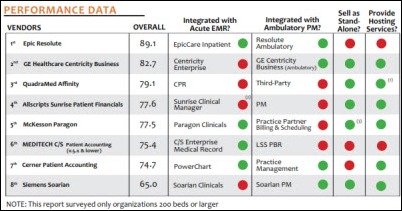
A new KLAS report says that patient accounting systems are the next hot thing in 200+ bed hospitals because of accountable care needs, the tapering off of Meaningful Use system selections, and the impending transition to ICD-10. Integration is a priority, leaving Epic and Cerner as the only inpatient billing systems that also cover ambulatory billing, with Cerner still scoring low but trending up. Update: KLAS says my summary is misleading, so here is their exact wording: “Epic and Cerner are the only vendors whose inpatient billing systems are integrated with both their inpatient EMR and ambulatory billing systems.”
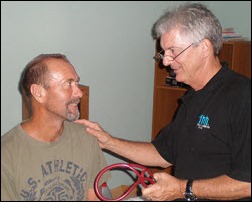
A solo family physician in rural Colorado says he “gave up on healthcare in America,” sold his practice to a hospital, and moved to Australia because of the 2 percent Medicare penalty he would have been charged in 2015 for not adopting an EHR that he couldn’t afford anyway. He says in Australia people love his American accent, he gets a lot of time off, and he makes $250,000 a year for a light schedule vs. the $100,000 he was making for being overworked in Colorado. “Primary care is highly respected here. That’s not the case any more in America. In the United States, health care has become more about the business of making money. The personal side of medicine is going away.”
CommonWell, challenged directly on Twitter by Terry Bequette, state HIT coordinator for the State of Vermont, says “all HIT developers” are welcome to join.
WakeMed (NC) creates a video celebrating its 52 years and touting its new $100 million Epic system, which it is implementing along with nearby Triangle-area academic medical centers Duke University Hospital and UNC Health Care.
Truven Health Analytics reports that 71 percent of ER visits made by patients with employer-sponsored insurance coverage are for conditions that did not require immediate attention or could have been prevented with outpatient care.
Medhost files a lawsuit against Health Management Associates, claiming the hospital operator continues to use its ED software despite not having paid the third installment of $4.5 million last year.

Henry Ford Health System (MI) reports a 15 percent decrease in net income, primarily due to an increase in uncompensated care and the $36 million it spent to implement Epic. According to the CEO, “We knew that 2012 and 2013 would not be easy years for the system because of the Epic costs.”
A court orders UPMC to allow employees to use its computers and e-mail system for union-organizing activities.
Weird News Andy says this is like a reality show for doctors. Utah pediatricians trying to relate better to their teen patients hire acting students to simulate clinic visits and act out medical scenarios. The students are enjoying it so much that they have volunteered to continue after school is out.
WNA also likes this story, in which Seattle police are investigating reports that a nurse imposter entered patient rooms at Swedish Medical Center and cut the IV lines of patients to steal what sounds like narcotic-containing PCA cartridges.

 In patient fashion news, Henry Ford Health System introduces a new double-breasted hospital gown that closes in the back, uses snaps instead of ties, and is made of thicker fabric than traditional gowns. One of the gown designers notes that, “By creating a hospital gown that is safe, stylish, and comfortable, we’ve made the patient feel more at home, like they’re wearing their own garments." Kind of makes me want to schedule some elective surgery just to try one out.
In patient fashion news, Henry Ford Health System introduces a new double-breasted hospital gown that closes in the back, uses snaps instead of ties, and is made of thicker fabric than traditional gowns. One of the gown designers notes that, “By creating a hospital gown that is safe, stylish, and comfortable, we’ve made the patient feel more at home, like they’re wearing their own garments." Kind of makes me want to schedule some elective surgery just to try one out.
Sponsor Updates
- Aprima Medical Software, Greenway Medical Technologies, and Allscripts forego interface fees as preferred partners for Greater Houston Healthconnect’s regional HIE.
- Elsevier issues a brief that identifies the need for and potential impact of evidence-based medicine.
- Wellsoft will participate in next month’s 2013 Emergency Medicine Update conference in Toronto and the e-Health 2013 conference in Ottawa.
- Barb White, director of healthcare solutions for AT&T, discusses cyber attacks and security breaches in healthcare.
- MedAssets’ Sandy Hoffman co-hosts the Fifth Annual Mouse Races for MS in Cape Girardeau, MO on April 27.
- Laura Kreofsky, principal advisor with Impact Advisors, discusses how EPs are spending their Meaningful Use incentives.
- Prognosis suggests topics to discuss with current or potential vendors to avoid EHR dissatisfaction.
- Penn State makes the DynaMed clinical reference database available to all students and staff.
- Boston Children’s Hospital Chief Innovation Office Naomi Fried and Carnegie Mellon University professor Alan Russell will provide the keynote addresses at the iHT2’s Health IT Summit in Boston May 7-8.
- ADP AdvancedMD hosts a May 8 Webinar on engaging patients in their healthcare.
- NextGen Healthcare hosts a May 1 Webinar on effective claims processing.
- Stuart Long, Capsule’s chief marketing and sales officer, discusses the benefits of medical device integration and how it works in a hospital.
EPtalk by Dr. Jayne
ONC issues the Apps4TotsHealth Challenge to encourage integration of the TXT4Tots message library into new or existing platforms. The library includes evidence-based messages focusing on nutrition and physical activity and is targeted to parents and caregivers of children 1-5 years old.
The National Institutes of Health is using IT to boost energy savings. Maneuvers that would benefit healthcare entities include forcing computers to go on standby at the end of the day and software to aggressively manage environmental systems.
Children’s National Medical Center is using video games as a way to measure and manage chronic pain. Applications are used for physical therapy as well.

Overheard in the physician lounge: two of my colleagues were discussing slick new carts that have appeared on the floors. I’m happy to note that they are from HIStalk sponsor Enovate.

I received a HIMSS e-mail regarding the annual conference experience and asking me to take a brand survey on my “emotional connection” to HIMSS. I was asked to select images that fit attributes for the HIMSS brand on “touch, taste, scent, sight, and sound.” Maybe I’m too much of a literal person, but I found the concept odd. It also didn’t fit my screen without scrolling, making it a non-starter.

Contacts
Mr. H, Inga, Dr. Jayne, Dr. Gregg, Lt. Dan, Dr. Travis.
More news: HIStalk Practice, HIStalk Connect.



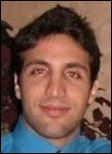



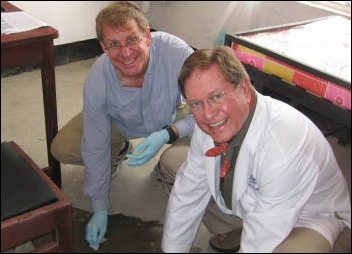


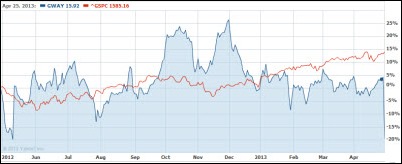






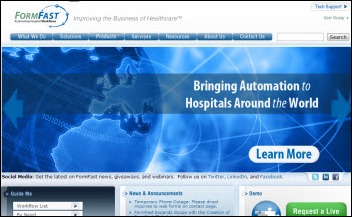

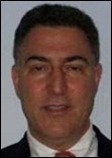
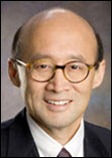
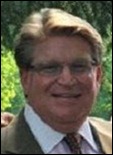

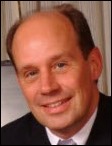


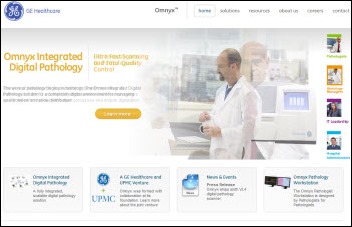


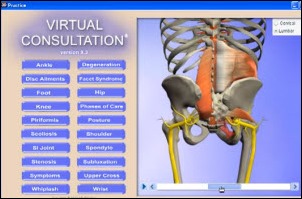

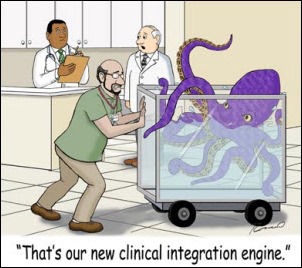





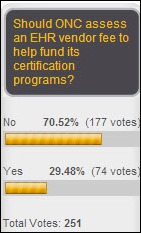


































Traditionally Professional Courtesy is something that physicians gave each other - but we had to be careful with it when…